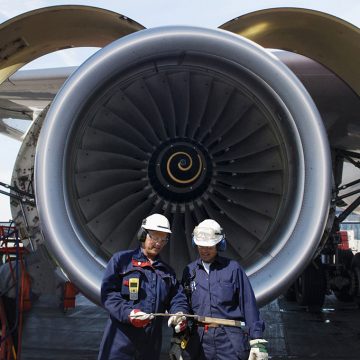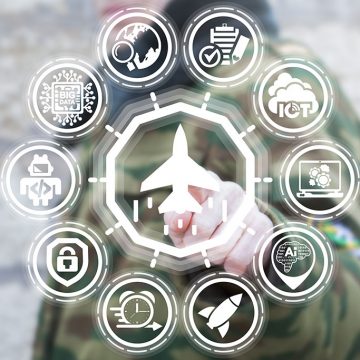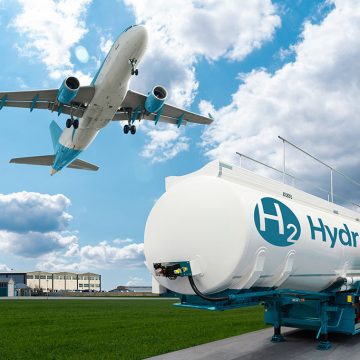Tackling Aircraft Down-Time
An aircraft’s job: to take off and land reliably, safely, and efficiently. As we look at today’s technologies and tomorrow’s advanced predictive tools, we believe that fleet health will increasingly be measured and analyzed in real-time, while fleet maintenance will be scheduled based on digitally predicted needs. Some of the factors that created challenges in the past, like unexpected downtime, inventory tracking, and environmental compliance, are now compounded by the COVID-19 impact on fleet age. As we track the digital transformation and workflow processes of the last decade, we want to spotlight where we believe fleet management will be in the future.
In the past, fleet management was as much art as science. It is, however, getting more challenging to manage an aviation fleet from a spreadsheet or whiteboard. Now, more than ever, intelligent software and data tools are needed to support decision making. The industry is evolving as some MROs leveraged options in value-based technology to streamline processes and reduce cost. This step toward digital transformation enables fleet managers to make informed decisions around condition-based maintenance and readiness based on real-time data analytics.
Digital Transformation through Robotic Process Automation
Some maintenance & repair operators (MROs) and airlines are leveraging the grounded time created by COVID-19 to accelerate their digital transformation by integrating robotic process automation (RPA) to complete repetitive manual processing tasks. By implementing RPA, an airline or MRO ‘hires’ a digital workforce that can accelerate a workflow and improve compliance. Think about a material requirement planning (MRP) provider and its customer who is using two different MRO software systems. Let’s assume that the MRO provider’s consumable stock is only available in their own MRO software system. The maintenance planning is performed in the customer’s MRO software system and is dependent on the available parts supply. Previously, only inadequate and timely interfacing options were available to update independently linked data systems. RPA can solve the problem by creating a software robot that automatically makes the up-to-date inventory transactions available in all required MRO software systems and ensures synchronization without any human intervention. This unlocks time for the maintenance team to work on higher priority tasks that are impacting down time. In addition, studies indicate that RPA delivers higher accuracy on process execution and will thus ensure compliance to regulatory requirements. This is a significant benefit when managing the requirements of multiple compliance agencies.
Condition Based Maintenance and Real Time Monitoring
A significant impact on down time that is expected to continue, is fleet condition. In today’s paradigm, manufacturers design and produce aircraft based on a specific set of requirements and conditions. The aircraft in the field needs maintenance. In some instances, to reduce down time, parts are swapped or modified to restore operation. This is customary in the Defense industry when down-time could impact the success of a mission. Aircraft condition is also affected by use and environmental factors. The same model of aircraft will present different maintenance requirements based on the number of hours flown, number of landing cycles, impact from landings, even environmental factors like saltwater or desert sand. Aircraft manufactures are taking on a more system-design approach to maintenance by integrating predictive data models much like those found in our cars, which tell us to schedule an oil change or check tire air pressure. Condition based maintenance has improved costs and efficiency across the industry, but there is still a significant cost associated with unscheduled maintenance events. As we look to the future of condition-based maintenance, the conversation has expanded to expect intuitive aircraft structural-system health monitoring. Commercially, real time aircraft health monitoring is used minimally, with extensive opportunity to allow more data flow to improve maintenance turnaround time and diagnostic oversight.
The sensors and data processing capabilities in today’s automobiles are powering everything from comfort controls and self-parking, to alerting the owner well in advance of a maintenance needs. Several commercial aircraft are now deployed with sensors that monitor the health of many of the on-board systems and track routine maintenance lifecycle parameters. The ability to transmit aircraft data to the ground during flight, will allow maintenance managers the opportunity to be proactive with maintenance activities as soon as the aircraft lands, reducing downtime. Operational decisions such as equipment swaps, flight delays, or flight cancelations can be more proactively managed. The cost to create dynamic models of multi-disciplinary fleet management systems has declined considerably over the past few years and is well within the budget of most manufacturing-machine design projects.
Digital Twinning: The Future of Simulated Fleets
As we look to the future of aviation, we believe that formal requirement management, advances in wireless communication capabilities, and the development of high-fidelity dynamic models used in simulations will result in structural health management systems based on simulated digital twinning. A digital twin provides a virtual representation or simulation of a physical asset and monitors its performance in real-time. These tools can simulate performance, predict potential maintenance needs, and ultimately optimize the asset for peak performance. Businesses will embed their physical assets with sensors to produce the data necessary to inform a digital twin. By transforming the physical assets into IoT-enabled devices, they can track and monitor the physical piece of machinery. All of these innovations will lend themselves to help aircraft operators benefit from lower downtime in both the commercial and defense spaces.
This post is part of a series on the future of fleet management. Today’s post discusses the current and future innovations that are shaping how aviators reduce down time. The next item in the series will highlight parts inventory management.
What do you think the future of fleet management will look like? Write in the comments below.
Streamlining Parts Inventory Management
 Aircraft maintenance and repair is a primary environment where highly specialized parts, skilled people, and expensive tools are used in a critical, time-sensitive environment. Aligning all three in the right place at the right time has been an ongoing challenge for anyone charged with fleet management. Radio Frequency Identification (“RFID”) and bar coding are current technologies that have been integrated into workflows to improve reliability, efficiency and reduce cost. We look to additive manufacturing, AI and the internet of things (IoT) for future innovations in this arena. Additive manufacturing, the industrial application of 3D printing, will aid in both commercial and defense-based inventory management for time and logistically sensitive operations. Both commercial and defense sectors will also benefit from propelled efficiencies in the new IoT (Internet of Things) era, having more intricately connected sensors to relay data to ground systems. With more intricate, connected sensors and more insightful data, real time analysis can enable pre-emptive decision making.
Aircraft maintenance and repair is a primary environment where highly specialized parts, skilled people, and expensive tools are used in a critical, time-sensitive environment. Aligning all three in the right place at the right time has been an ongoing challenge for anyone charged with fleet management. Radio Frequency Identification (“RFID”) and bar coding are current technologies that have been integrated into workflows to improve reliability, efficiency and reduce cost. We look to additive manufacturing, AI and the internet of things (IoT) for future innovations in this arena. Additive manufacturing, the industrial application of 3D printing, will aid in both commercial and defense-based inventory management for time and logistically sensitive operations. Both commercial and defense sectors will also benefit from propelled efficiencies in the new IoT (Internet of Things) era, having more intricately connected sensors to relay data to ground systems. With more intricate, connected sensors and more insightful data, real time analysis can enable pre-emptive decision making.
The Demand for more Automated & Reliable Inventory Management Systems
Today, part life is defined by the manufacturer in wear, hours, cycles, calendar days, and other metrics. A technician installing a life-limited part will record all the pertinent information manually; however, when a part is moved from aircraft to aircraft, the responsibility to track and manage the maintenance work flow becomes far more complicated. If a component is late to arrive or misplaced due to mismanaged use of ERP systems, operators incur unnecessary cost and increased aircraft down time. This can be further compounded in the Defense industry because extensive fleet down time can directly impact a mission’s success and cost. Technicians need to make immediate decisions about part utilization that, combined with a deployment’s fluid nature and the security risk of centralizing fleet part critical data, make for a highly challenging data management situation. Real time part tracking and reliable, verifiable information are vital to MRO providers.
Commercial carriers are typically able to organize storage and tracking around central hubs. Just-in-time supply chain and storage programs can lower inventory costs and increase parts utilization efficiency. Because annual holding costs for commercial maintenance materials can run 20% or higher from the original cost of purchase, the need for accurate parts allocation and scheduling is imperative. Optimizing or implementing data driven systems that curb this uncertainty can lower cost, time and provide greater oversight to maintenance workers and operators.
Improving on Existing Infrastructure
Many operators have been moving to Just-In-Time (JIT) delivery systems in an attempt to reduce costs. During the COVID-19 pandemic, this enabled a significant reduction in holding costs for airlines. Operators will soon need to re-evaluate their approach, with increasing supply-chain requirements needed to match increasing industry demand. On the ground floor, some more technically advanced inventory management programs integrate Radio RFID’s in parts to improve record keeping and supply chain accuracy. An RFID system mainly consists of a transmitter (RFID tag) and receiver (RFID reader). Aircraft manufacturers and Original Equipment Manufacturers (OEMs) are already using RFID tags in various aircraft parts to track production, transport, and assembly.
For a smooth operation, MRO facilities can monitor service orders in real time and verify the availability of spare parts required in an Enterprise Resource Planning (ERP) system. Unfortunately, manual entry of a part’s parameters is still common and combined with overly complicated, unreliable and time-consuming information systems. MRO operators need more streamlined, automated and reliable inventory data systems to reduce the possibility of human error and misplaced parts. Tagging parts can significantly speed documentation of routine maintenance tasks, saving significant time and labor costs. RFID tags can uniquely identify and tag parts as they move along a chain of custody.
Implementing this data into an existing ERP more effectively can help update and inform maintenance providers more reliably, saving on cost and time.
When a part cannot accommodate an RFID sensor, bar coding can be used to track inventory in storage. Some MROs may only use bar code systems. Barcodes help manage inventory, reduce picking and shipping errors, capture labor hours, and manage tooling. Specified RF scanners deliver extensive functionality out of the box, letting workers capture data in storage facilities and at remote work areas without being tied to a computer. This allows for a system-view association between maintenance processes and part supply/availability that facilitates more efficient operations.
Looking to the Future
 As we look to the future, we see the digital transformation in parts inventory management focusing on additive manufacturing, artificial intelligence, and IoT (Internet of Things). Additive manufacturing is an industrialized 3D printing process that would enable onsite production of eligible aircraft parts, reducing the need to inventory those parts. Aircraft MRO facilities typically maintain a certain amount of critical spare parts to avoid an ‘aircraft on ground’ situation. Additive Manufacturing allows for rapid and lean parts production. Imagine the ability to cost effectively 3D-print interior components, ductwork, and non-critical parts. Once implemented, this would significantly reduce inventory holding and supply-chain costs. In a Defense setting, additive manufacturing capabilities would reduce the necessary volume of mobile inventory packs and simplify supply-chain logistics in a fluid deployment scenario.
As we look to the future, we see the digital transformation in parts inventory management focusing on additive manufacturing, artificial intelligence, and IoT (Internet of Things). Additive manufacturing is an industrialized 3D printing process that would enable onsite production of eligible aircraft parts, reducing the need to inventory those parts. Aircraft MRO facilities typically maintain a certain amount of critical spare parts to avoid an ‘aircraft on ground’ situation. Additive Manufacturing allows for rapid and lean parts production. Imagine the ability to cost effectively 3D-print interior components, ductwork, and non-critical parts. Once implemented, this would significantly reduce inventory holding and supply-chain costs. In a Defense setting, additive manufacturing capabilities would reduce the necessary volume of mobile inventory packs and simplify supply-chain logistics in a fluid deployment scenario.
The integration of artificial intelligence with aircraft fleet management will empower the development of predictive and preventive data models that foretell maintenance needs. Using AI-enabled machine learning, decision models can recommend which parts and where maintenance will be needed down the road, thereby putting an operator’s maintenance department in greater control of the workflow process. Taking a fleet management perspective, this also gives you greater insight into the fleet’s overall health as projected into the future.
IoT, or the network of physical objects imbedded with sensors that connect to a network for the purpose of relaying data, will play a significant role in integrating inventory management data by expanding on today’s radio frequency capabilities. As more data is extracted from intelligent aircraft that can quickly relay real-time diagnostic data to the ground, the power and accuracy of existing fleet management software will increase and enable automatic ordering and dispatch of parts, where and when they are needed. In addition, IoT will enable the proper categorization and upkeep of on-the-shelf inventories, such as engines that need to be rotated for fluid distribution, batteries that need to be charged, or fire extinguishers that have a shelf life.
Blockchain technologies will also play a key role in the management of part custody and the immutable recording of maintenance activity. This will result in improved data quality that will allow for a broader scope of insight into reliability. It will also certify, redefine, and improve maintenance activities, part-life management and product improvement activities throughout aviation.
Along with leaner more flexible manufacturing technologies, the future of parts inventory management is all about enabling more intricate data collection, integrating that into intelligent data systems, and using advanced analysis to empower fleet managers with tools that reduce cost and improve workflows. These innovations aim to further optimize the aircraft maintenance supply chain: having the right part, at the right place, at the right time.
Environmental Compliance and COVID-19
Pressure on the aviation industry to balance increasing air travel demand with environmental protection is at an all-time high. Air quality, ambient noise levels, water quality, energy use, waste management, and climate change remain some of the most noticeable areas of concern. The Environmental Protection Agency reported in 2019 that aircraft contributed 12 percent of U.S. transportation emissions and accounted for three percent of the nation’s total greenhouse gas production. In 2019 an Oliver Wyman Consultancy report estimated that jet fuel demand would increase globally through 2035. Although COVID-19 impacted that forecast, industry experts agree that the growing need for air travel, freight, and defense needs will continue to drive demand and raise emissions. Efficient fleet process management and streamlined data systems can help lower emissions by finding more effective maintenance, inventory, and logistics solutions that reduce unnecessary supply & operating processes.
Evolving environmental guidelines have affected the aviation industry’s fleet maintenance protocols, and with new environmental policies from the Biden administration, additional regulatory changes are to be expected. For the world to achieve net-zero emissions by 2050 as prescribed in the Paris Agreement and maintain the prescribed safe level of atmospheric greenhouse gases, the aviation industry will have to find a way to lower emissions. Accurate measuring and forecasting of these emissions is paramount in effectively capturing data and forecasting to prepare for the future.
Through the International Air Transport Association (IATA), the aviation industry has committed to cut CO2 emissions in half by 2050 with innovative technologies, sustainable aviation fuel, and improved operations and infrastructure. Although the industry only accounts for 2-5% of manmade carbon emissions world-wide, its fuel consumption is staggering, with over 106 billion gallons consumed in 2019 alone. ((EIA), 2020) For many airlines, replacing older aircraft with new, more efficient aircraft is a significant part of the effort, something that COVID-19 has slowed. Small changes to existing aircraft can also help. For example, American Airlines said it decreased fuel use by 4% by installing small vertical pieces, called winglets, onto the ends of wings on most of its planes. This is now standard on almost all new equipment. The devices improve the wing’s lift by changing its aerodynamic profile.
A similar shift to reduce carbon emissions is occurring throughout the transportation industry. For marine shipping, the United Nations International Maritime Organization (IMO) has set targets for greenhouse gas to be reduced by 50% in 2050.
Impact of Emerging Fuel Technologies
To complement fuel efficiency measures in aviation, scientists have been exploring Direct Air Capture (DAC) technologies. DAC pulls in atmospheric air, then through a series of chemical reactions, extracts carbon dioxide while returning the rest of the air to the environment. The cost per ton for this process has improved significantly in the last decade, but still remains incredible energy intensive.
 For the foreseeable future, liquid fuels are the only viable energy source to power commercial aircraft. “Batteries and fuel cells are not options for regional aircraft and larger, which are the source of CO2 within the next 30 years.” (National Academies of Sciences, 2016). Perhaps a future solution will come from the work being done by Carbon Engineers™. They plan to use DAC extraction to make synthetic fuels that can substitute for diesel, gasoline, or jet fuel. The industry could benefit from data driven models that show the viability of DAC as energy prices drop and technology improves with time. The most significant environmental evolutions in the future will involve replacing combustion engines with something more efficient, like electric propulsion. In fact, United Airlines announced February 10, 2021 that it has placed a $1 billion pre-order for electric vertical-takeoff-and-landing (eVTOL) aircraft made by Silicon Valley startup Archer Aviation, with the option to buy an additional $500 million worth of aircraft. Although these aircraft can offer short-range taxiing services, they are no solution for mid to long range flights as of now.
For the foreseeable future, liquid fuels are the only viable energy source to power commercial aircraft. “Batteries and fuel cells are not options for regional aircraft and larger, which are the source of CO2 within the next 30 years.” (National Academies of Sciences, 2016). Perhaps a future solution will come from the work being done by Carbon Engineers™. They plan to use DAC extraction to make synthetic fuels that can substitute for diesel, gasoline, or jet fuel. The industry could benefit from data driven models that show the viability of DAC as energy prices drop and technology improves with time. The most significant environmental evolutions in the future will involve replacing combustion engines with something more efficient, like electric propulsion. In fact, United Airlines announced February 10, 2021 that it has placed a $1 billion pre-order for electric vertical-takeoff-and-landing (eVTOL) aircraft made by Silicon Valley startup Archer Aviation, with the option to buy an additional $500 million worth of aircraft. Although these aircraft can offer short-range taxiing services, they are no solution for mid to long range flights as of now.
Hydrogen (H2) powered aircraft are being developed and may one day be possible for mid and large-scale use. The first hydrogen fuel-cell powered flight of a small commercially viable aircraft occurred on September 23, 2020 with a ZeroAvia customized Piper M-class aircraft. This UK based company’s HyFlyer project aims to develop scalable hydrogen/electric hybrid propulsion and also the infrastructure to fuel them. Completely emission free, hydrogen fuel-cell technology is innovating at a rapid pace with small companies like PDC Machines innovating for a multitude of applications.
Although decades away, modified DAC synthetic fuels and the eventual rise of electric and hydrogen powered planes will necessitate a complete pivot for fleet management infrastructure.
COVID-19 Impact on Fleet
Global air travel was increasing at a steady rate in the past decade. Before COVID-19, Oliver Wyman Consulting predicted that the worldwide fleet would expand by 42% in the next ten years. Due to sheltering guidelines and travel bans, earlier this year, over 17,000 aircraft were grounded. The impact of this market retraction is being felt across every aspect of the industry and those fleet expansion figures are sure to see a drop.
The two major aircraft manufacturers announced earlier this year that production of some of their legacy long-haul aircraft is suspended. Some airlines that were looking to retire older planes in the fleet have canceled orders and prefer maintaining existing aircraft over purchasing new. These decisions are primarily based on cost and maximizing the value of current capital investments; conversely however, parts do become more difficult to source and work on as the fleet ages.
In addition, MRO (Maintenance, Repair and Overhaul) inventory and repair forecasts are based on not only how aircraft have been used in the past, but also on what new updates have been made to the fleet. During the COVID pandemic, more aircraft within the fleet sit on the ground, and some aircraft are sitting on the ground longer. This condition may not improve rapidly, as consumer sentiment, and demand for air travel recovers more slowly. Grounded aircraft require additional maintenance, and additional maintenance can lead to an increase in human-induced problems.
As we look past COVID-19 travel restrictions, the focus will be on helping MRO operators do a better job with what they have. As discussed previously, implementing data driven fleet management solutions that use predictive and preventative analytical tools will be a major step forward within the industry.
The future of fleet management and optimization of fleet health is dependent on networks, devices, and data. In the future, IoT (Internet of Things) will allow aircraft sensors and devices to communicate securely with others and bring that data to a network. AI and machine learning will facilitate advanced predictive decision tools and automated processes. Although we can safely predict that consumer demand will rebound, aircraft orders are down in numbers and operators now have to deal with more extensive management of aging fleets. COVID-19 has been a major disruptor in this industry and its effects will be felt for more years to come. It is a complex situation; do you have a theory on how this the COVID-19 impact will play out over across this region?




